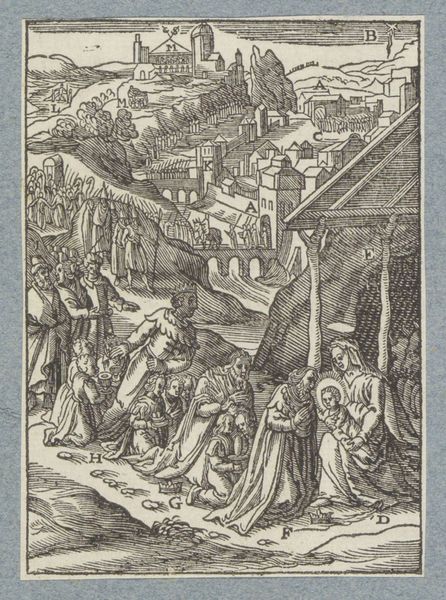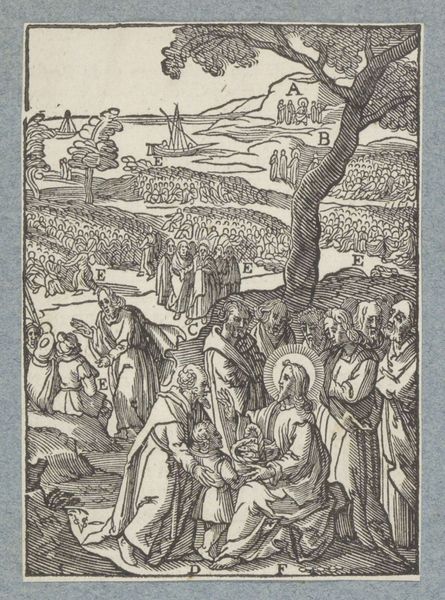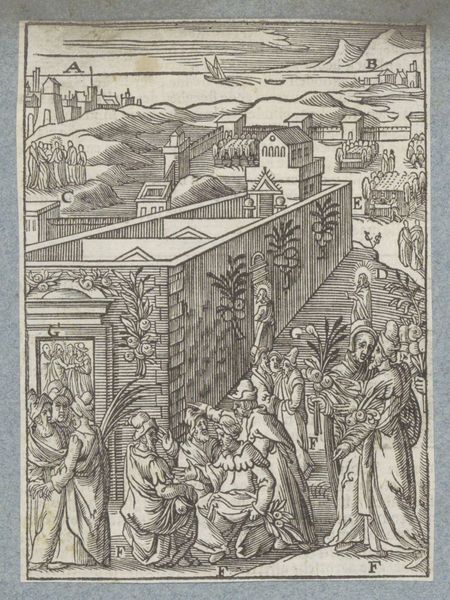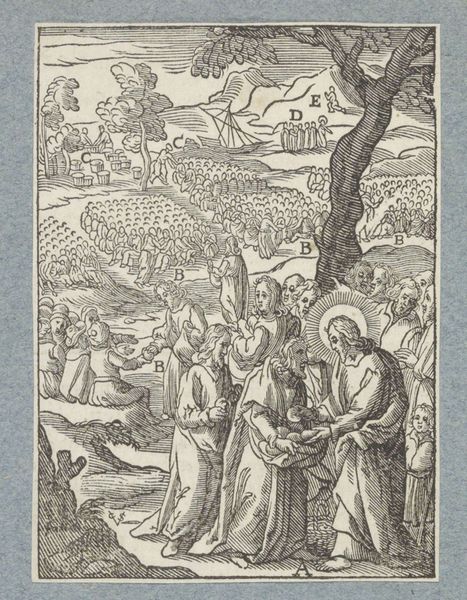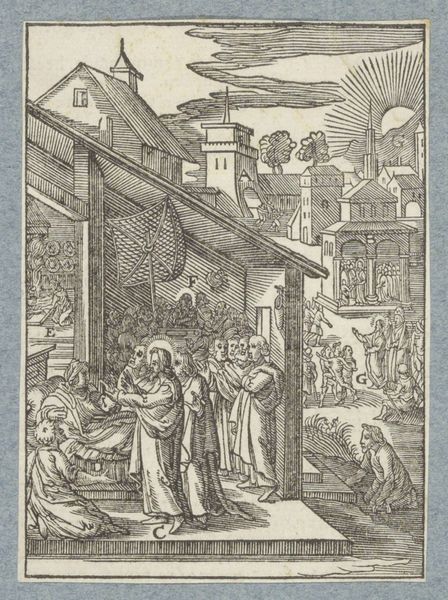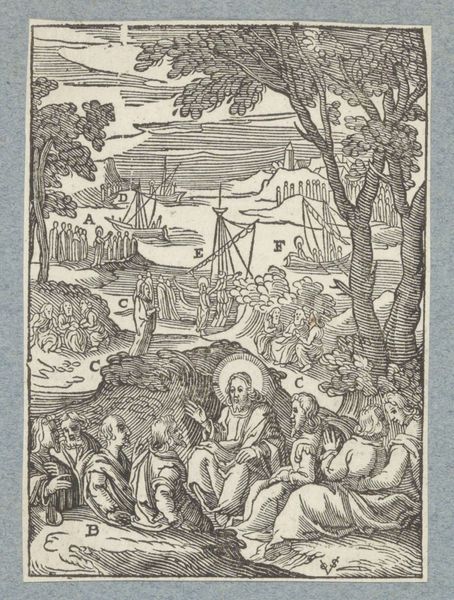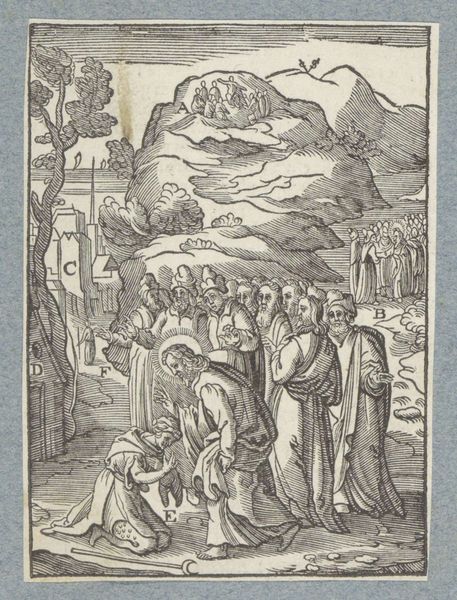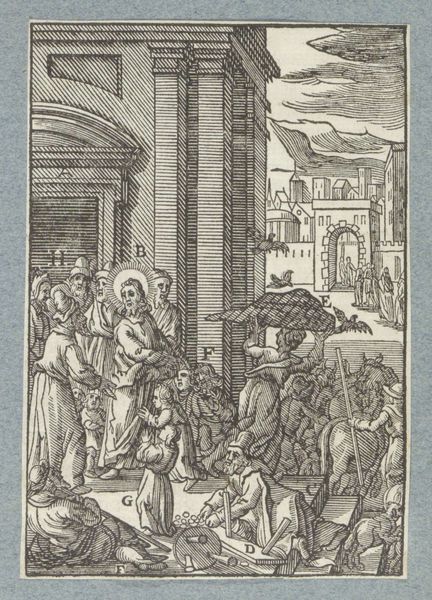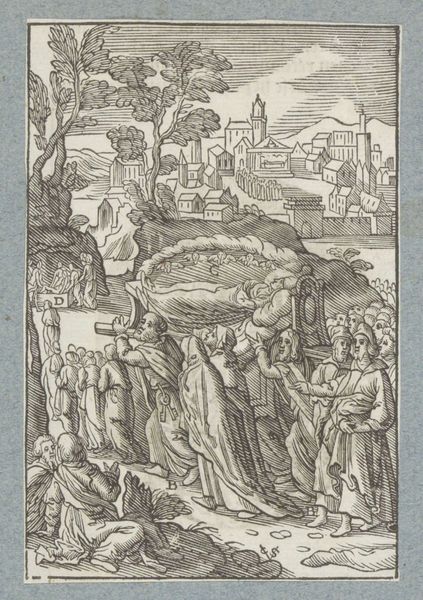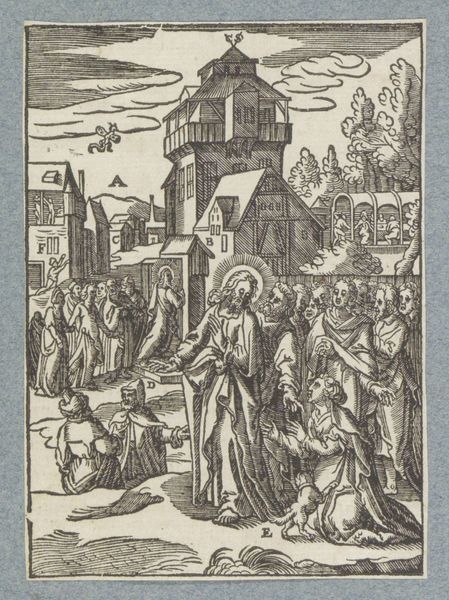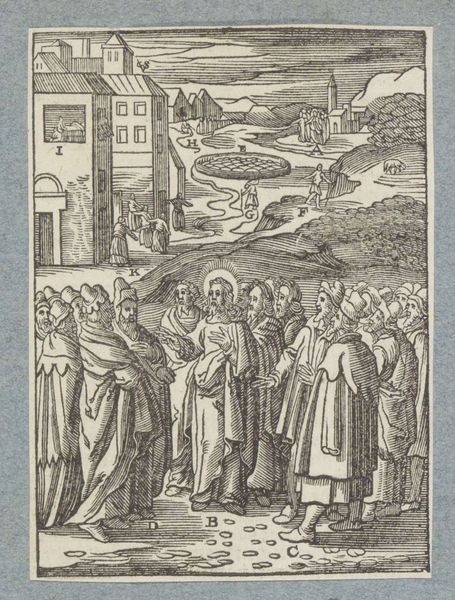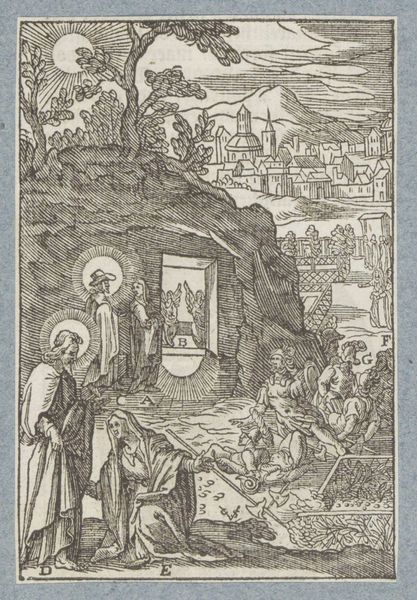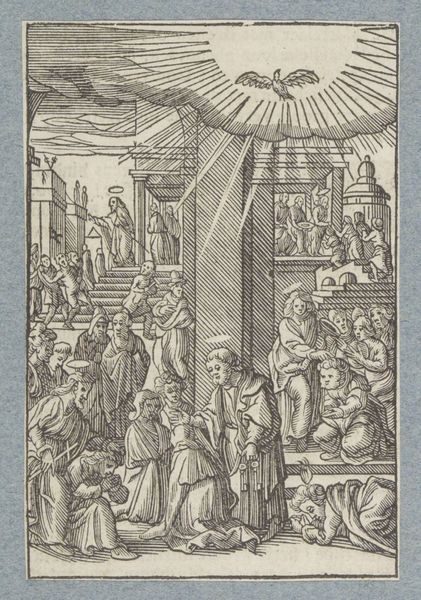
drawing, print, ink, engraving
#
drawing
#
baroque
# print
#
landscape
#
ink
#
history-painting
#
engraving
Dimensions: height 112 mm, width 74 mm
Copyright: Rijks Museum: Open Domain
Curator: Here we have a rather intricate engraving and drawing, "Christus verschijnt aan de heilige vrouwen," created in 1629 by Christoffel van Sichem II, currently residing at the Rijksmuseum. Editor: It feels claustrophobic, despite the landscape setting. The tight hatching gives everything this feeling of being crowded, almost anxious. Curator: An appropriate response, given the context of the scene depicted. The narrative here revolves around Christ’s appearance to the women after his resurrection. We can observe this moment through the figures in the foreground but further investigate the societal structures illustrated in the background. Editor: Yes, I immediately noticed how the figures are rendered within a landscape containing multiple other figures, set against a bustling town in the background. It almost overwhelms the purported subject of the print! It prompts me to question, what stories are being told through this depiction of societal hierarchies? Curator: It's precisely that tension that's so compelling. Sichem has used contrasting techniques to create that push and pull. See how the linework describing the women in the foreground is so much denser, and carefully crafted. It emphasizes their emotions. Editor: Absolutely, and that serves to amplify their marginalized positions. While the town, brimming with laborers, merchants, and grand structures like a tower and what appears to be a senate-like building, denotes power and organized civilization, those holy women and Jesus Christ, at the right of the work, become displaced outsiders. This rendering may speak to the complicated positioning of women who were central figures in Jesus's life and faith in broader 17th-century European society. Curator: One could also interpret the background as a semiotic structure for the historical period; Sichem uses visual language familiar to the audience to locate the story within a particular temporal and cultural context. The architecture and city layout function as signifiers. Editor: Interesting how those lines, those marks, can lead us to different places depending on the lens we apply. Curator: Indeed, the convergence of those lenses reveals the rich layering within this single image.
Comments
No comments
Be the first to comment and join the conversation on the ultimate creative platform.
